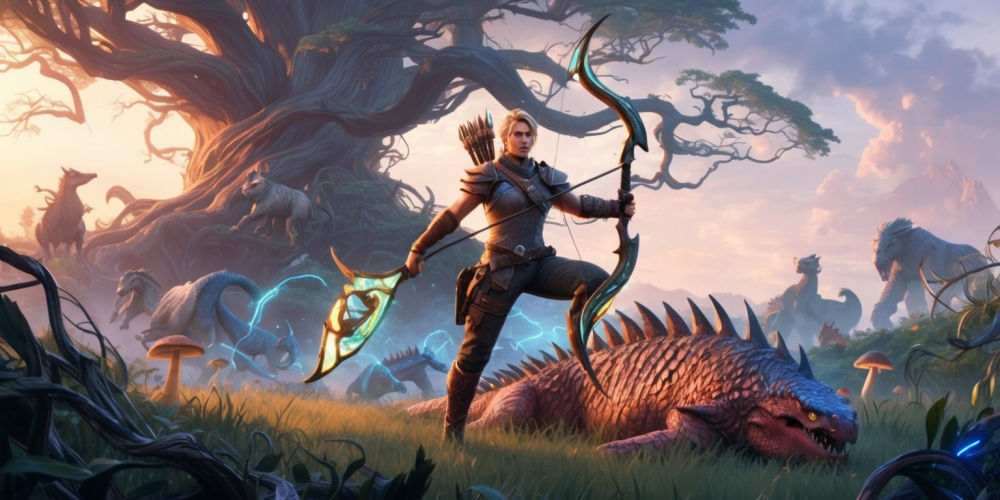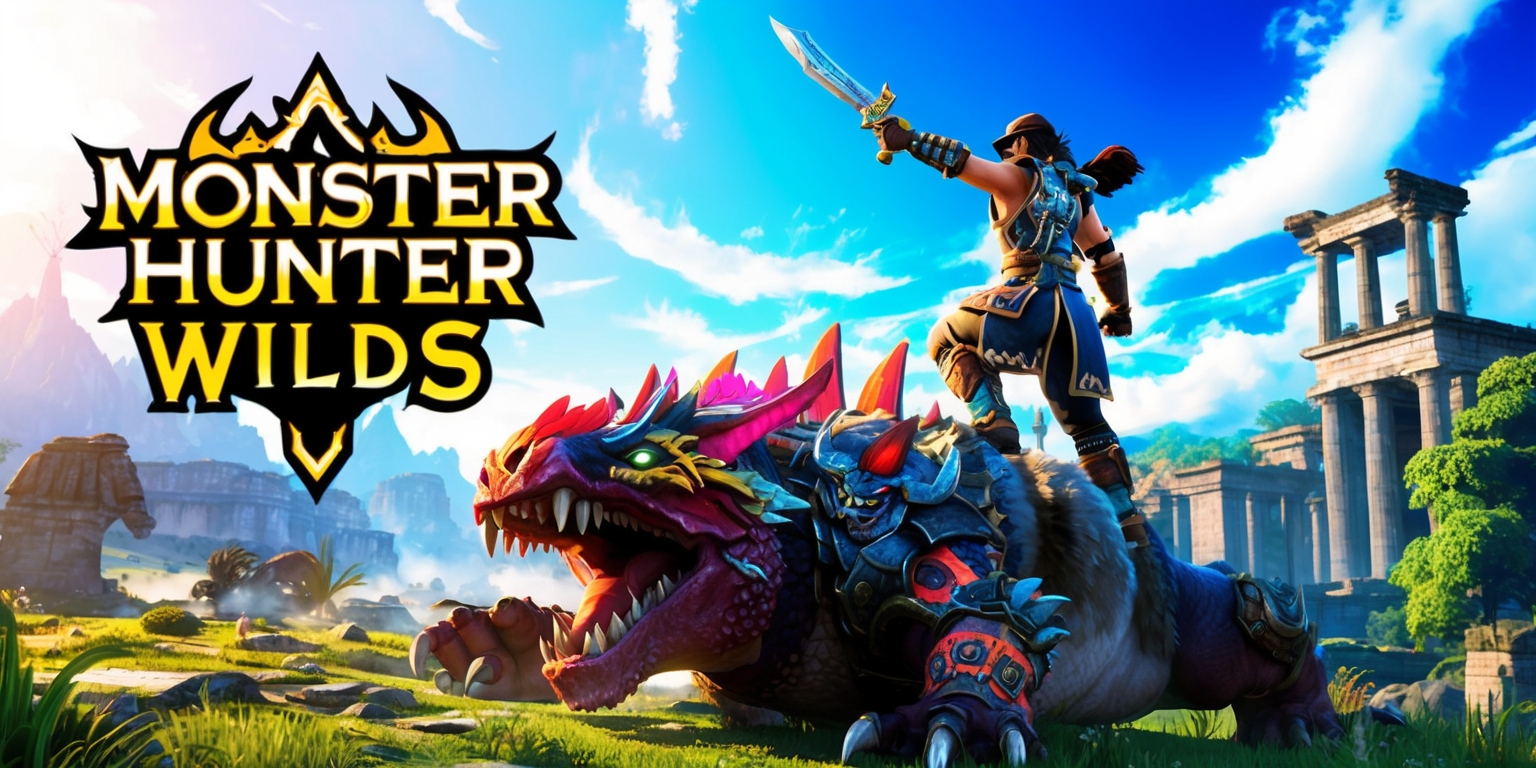06 May
Benjamin Carter

Embarking on an expedition across the diverse wilds, players are introduced to a deep, immersive gameplay that intertwines exploration with resource acquisition. Within the ever-evolving universe of Monster Hunter Wilds, every material holds its own value and significance. Among these materials, a special high rank component emerges in the form of Colossal Remains. Its rarity and strategic importance serve as one of the many challenges awaiting even seasoned hunters. As players progress deeper into the game, the maze of tasks and objectives unveils layers of engaging puzzles, combat strategies, and resource management scenarios that keep the journey both demanding and visually mesmerizing.
The Significance of Advanced Materials in High Rank Adventures
In the intricate landscape of Monster Hunter Wilds, advanced materials such as Colossal Remains accentuate the bridging of mundane quests to higher stakes. The acquisition of such components marks a turning point where regular foraging transforms into a challenge that requires careful planning, timing, and a deep understanding of the game’s ecosystem. High rank materials stand as coveted prizes for those who have earned the privilege through persistence in the game’s narrative challenges. Each extraction and collection mirrors a progressive upward journey, paralleled by a meticulous yet thrilling combat dynamic. The anticipation that mounts as one enters the high rank stage presents numerous opportunities, where every successful encounter not only broadens inventory but also intertwines narrative development with rewarding strategic gameplay.
Transitioning to High Rank and Unlocking New Challenges
Navigating through Chapter 4, known as "New Ecosystems," players witness a pivotal transition that unlocks the door to high rank adventures. This advancement is not merely a mode change but an evolution in strategic depth and design complexity. At this stage, gameplay demands both refined combat skills and an acute awareness of the surroundings. The introduction of materials such as Colossal Remains introduces fresh challenges that test both the hunter’s prowess and their adaptability. Players find that each new chapter submerged in higher stakes brings not only enhanced confrontations with elusive small monsters but also opportunities to explore resource-rich biomes. The transformation into high rank is a celebration of player determination, facilitating deeper immersion into a world teeming with dynamic strategies and enriching visuals.
Unveiling the Habitat of the Resourceful Conga
One of the prominent sources of Colossal Remains in Monster Hunter Wilds lies within the domain of the creature known as Conga, found predominantly in the Scarlet Forest. The habitat of Conga is vibrant and treacherous, a setting that demands both stealth and precision. Despite their classification as smaller adversaries, these creatures possess the remarkable ability to spawn in unique configurations that provide exciting gameplay opportunities. The Scarlet Forest, with its sprawling landscapes and vivid hues, offers a setting rich in environmental storytelling where every step can unveil hidden threats or rewards. The encounter with Conga is an exercise in adaptability since successful resource collection demands not only a swift approach but also a well-considered strategy that aligns seamlessly with the game’s broader narrative of survival and triumph.
The Icy Domain: Locating Blango in Harsh Climates

In stark contrast to the lush expanses of the Scarlet Forest, the realm of Blango introduces a frosty challenge where the environment itself shapes the gameplay. Set within Iceshard Cliffs, encounters with Blango require hunters to adapt to extreme conditions by equipping specialized gear and identifying unique environmental hazards. The origin of Colossal Remains through this creature invites players to appreciate the variety embedded Within the expansive realm of Monster Hunter Wilds, the icy terrain, with winds that add to the atmospheric tension, demands a careful balance of risk and reward where the lessons of observation and tactical retreat come into play. As the battle unfolds in such a chilly setting, strategic decisions based on weather-driven hindrances become critical, ensuring that the gaming experience remains both engaging and challenging.
Adaptive Tactics Against Naturally Grouped Opponents
Hunting in Monster Hunter Wilds often presents scenarios where players face not isolated foes, but groups that move and act together. Both Conga and Blango tend to appear alongside a cohort of similar small creatures, which not only intensifies the challenge but also enriches the immersive combat experience. Dealing with several opponents concurrently requires efficient resource management and agile maneuvering. Players discover that collaborative movements among these creatures facilitate rapid resource gains within a single encounter. This group dynamic transforms each combat scene into a spectacle of tactical planning, where precision and timing are pivotal. Amid the barrage of simultaneous actions and reactions, one must maintain focus to secure every morsel of Colossal Remains, ensuring that the coordinated groups offer as many rewards as they do challenges.
Strategic Tracking with Scoutflies and Regional Maps
An essential feature embedded in the game mechanics is the seamless utilization of scoutflies guided by a precise regional map. This innovative system allows players to pinpoint and track down their targets effectively, transforming what might seem like wild guessing into a methodical pursuit of objectives. By setting waypoints on the map, explorers are led to the areas where creatures such as Conga and Blango congregate, ensuring that the chase is as informed as it is rewarding. The integration of this tracking tool epitomizes the game's commitment to user-friendly mechanics. This layered, interactive approach not only enhances overall gameplay by reducing needless wandering but also serves as a tactical respite in moments of high-adrenaline combat, providing clarity and order in a chaos-infused setting.
Integrating Environmental Preparedness with Combat Strategy
The multifaceted challenges of confronting creatures in diverse terrains demand that players immerse themselves in a rich blend of preparation and combat savvy. For instance, the chilly conditions encountered when hunting Blango in Iceshard Cliffs necessitate the use of essential aids such as Hot Drinks or Heatmantle Bugs. This layer of resource management introduces a tactical depth where environmental factors interplay critically with combat strategies. The need to prepare for ambient hazards reinforces the importance of foresight. It encourages players to think strategically about every expedition they embark on. The presence of weather-induced challenges and creature-specific combat nuances illustrates the game’s design, where survival and ingenuity are interwoven seamlessly with the collection of rare, high rank materials.
Examining the Layers of Visual and Audio Aesthetics
The sensory experience in Monster Hunter Wilds is a meticulously crafted symphony of visuals and sounds that complements the gameplay’s intricate layers. The diverse environments, ranging from the vibrant Scarlet Forest to the icy expanses of Iceshard Cliffs, are rendered with a stunning array of details. These visually striking landscapes provide an immersive backdrop as players pursue Colossal Remains and other significant materials. Complementing these visuals, the game’s audio cues deliver subtle hints about the presence of nearby creatures and environmental shifts, effectively enhancing the overall experience. The interplay between detailed graphics and ambient sounds not only heightens tension during encounters but also serves to enrich the narrative depth, offering players an intricately woven tapestry of challenges and rewards.
Balancing Risk and Reward in Group Engagements
Among the most distinguishing traits of the high rank adventure is the delicate balancing act between risk and reward that arises during engagements with groups of small monsters. In such encounters, precision and timely decision-making are crucial keys to success. Encountering multiple opponents simultaneously presents a cascade of opportunities and challenges, requiring players to decide whether to press forward aggressively or adopt a more tactical stance. The grouping behavior of creatures like Conga and Blango ensures that careful planning is rewarded with multiple resource gains, including those rare components like Colossal Remains. This inherent risk-reward structure not only tests the player’s combat acumen but also reinforces the philosophy of adapting to methodical encounters, where every decision is a blend of calculated risk and potential bounty.
Exploring the Integration of Functional and Narrative Elements
The game brilliantly integrates functional gameplay mechanics with a rich narrative tapestry that anchors each quest in a meaningful context. Players discover that the act of gathering materials such as Colossal Remains is not an isolated task but rather an integral part of one that ties directly into larger story arcs and progression challenges. The integration of functional elements, like utilizing the regional map for tracking and managing environmental hazards, serves as both a gameplay necessity and a narrative device. This duality encourages players to Connect with the world in a more profound manner, making every hunt a journey not only of skill but also of story discovery. Such integration elevates the gameplay by transforming routine resource acquisition into a plot-driven mission where every action reverberates through the evolving tale of exploration and conquest.
Enhancing Gameplay through Tactical Item Management
The strategic management of consumable items is a core component that enhances the overall gameplay in Monster Hunter Wilds. Navigating through regions with temperature-related challenges and multi-creature encounters demands an effective resource management strategy. Players are encouraged to thoughtfully carry and utilize items like Hot Drinks or the peculiar Heatmantle Bugs as essential tools for survival. This mindful use of resources ensures that hunters maintain optimal performance even under lengthy and challenging hunts. The need to balance combat, exploration, and material collection translates into a gameplay experience where every item in the inventory has a clear, tactical purpose. It reinforces the principle that strategic preparation coupled with timely action can significantly mitigate the hazards inherent in the wild, thereby elevating the reward potential of each encounter.
